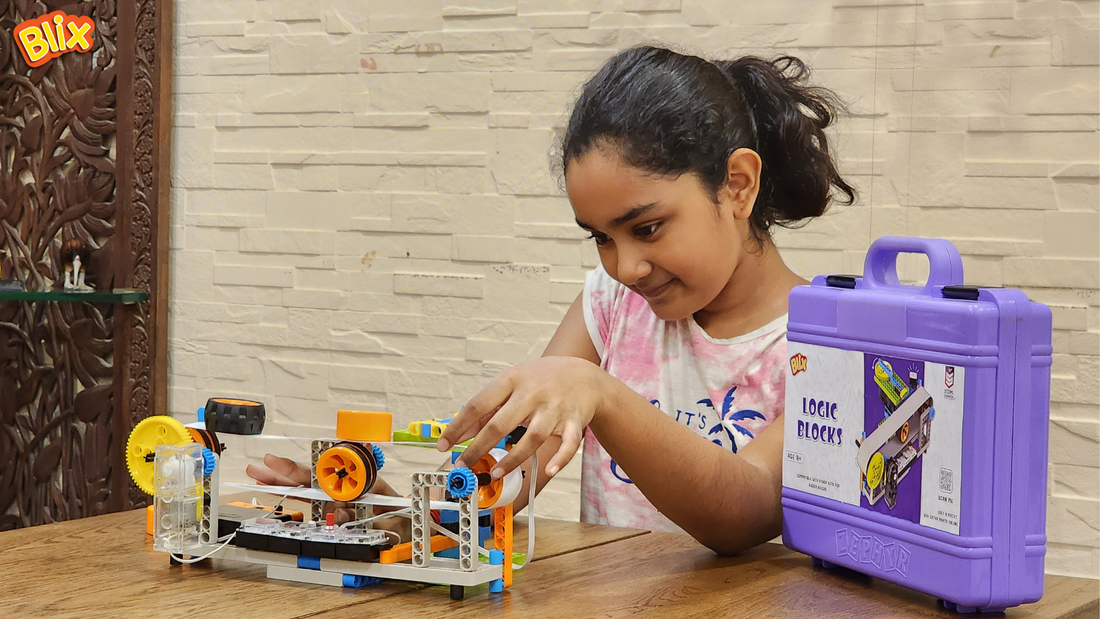
The Rise of AI and Robotics in STEM Education
Share

AI and robotics are changing the way students learn. Instead of just understanding theories, they are now moving towards how they can apply each. They are building, coding, and interacting.
With the availability of STEM robotics kits and a good STEM curriculum at school, students are quite prepared for the world driven by technology. Wondering how? Let's get into the lines!
How AI and Robotics are reshaping STEM education?
The traditional classroom model is changing. Educational robotics kits give students the freedom to experiment. They fail often because of which they refine their ideas. And with AI, learning goes beyond programming simple robots. Students explore machine learning. They learn about automation and what actually are real-world AI applications. All of this makes STEM subjects more immersive.
At one side, STEM robotics kits allow students to build working models. And on the other side, AI powered tools help them understand concepts like pattern recognition, decision-making, and self-learning systems. These both together actually build analytical thinking and creativity from an early stage.
Here's how robotics toys develop practical skills!
Robotics isn’t just for engineering students. Learners of all the groups can benefit from STEM kits. As all the kits are designed for interactive play and structured learning. Robotics toys teach foundational skills. Starting from logical reasoning, to problem-solving, and coding.
With robotics kits, students learn to assemble structures. They can integrate motors, and program some basic functions. As they progress, they can explore advanced AI robotics projects. Maybe building intelligent models that respond to real world actions, is something they can do.
And, here's how AI has a major role in early STEM education
AI tools have changed how students interact with robotics. Instead of manually programming each action, students can train their models using AI. This shifts learning from simple command-based programming to understanding how AI interprets data and makes autonomous decisions.
See, in simpler words, STEM education now is no longer limited to circuits and mechanics. AI powered educational robotics kits have brought in a lot of new concepts to learn. Be it predictive analysis, or speech recognition, and automation. All of this together giving students a broader understanding of intelligent technology.
How to make robotics and AI a core part of STEM education?
1. Make AI and Robotics a core part of the study curriculum
A school must invest in having a structured robotics curriculum. This will allow students to both experiment and also build skills progressively. Schools must give AI-powered STEM robotics kits into lesson plans a try. This will actually build technical knowledge and creative application of the student.
Students can start with basic STEM toys that teach fundamental principles. As they advance, they can explore complex AI robotics projects. This step-by-step learning structure builds confidence and deepens understanding, which actually is quite the need of the hour.
2. Allow kids to participate in competitions
Competitions drive students to push their skills further. Events like Blix-a-thon provide a platform where students can apply AI and robotics knowledge in real-world challenges. By participating in such competitions, students collaborate, innovate, and build AI powered robotic models. They easily get to reinforce what they’ve learned but in a more competitive and engaging environment.
Now, what's in for the future?
AI and robotics are no longer futuristic concepts. They instead are an integral part of education today. Schools that introduce STEM robotics and AI early give students a strong foundation in problem-solving, creativity, and innovation. So, are you ready to prepare students to think critically? Allow them to build solutions with AI and automation? Let's join forces together!
